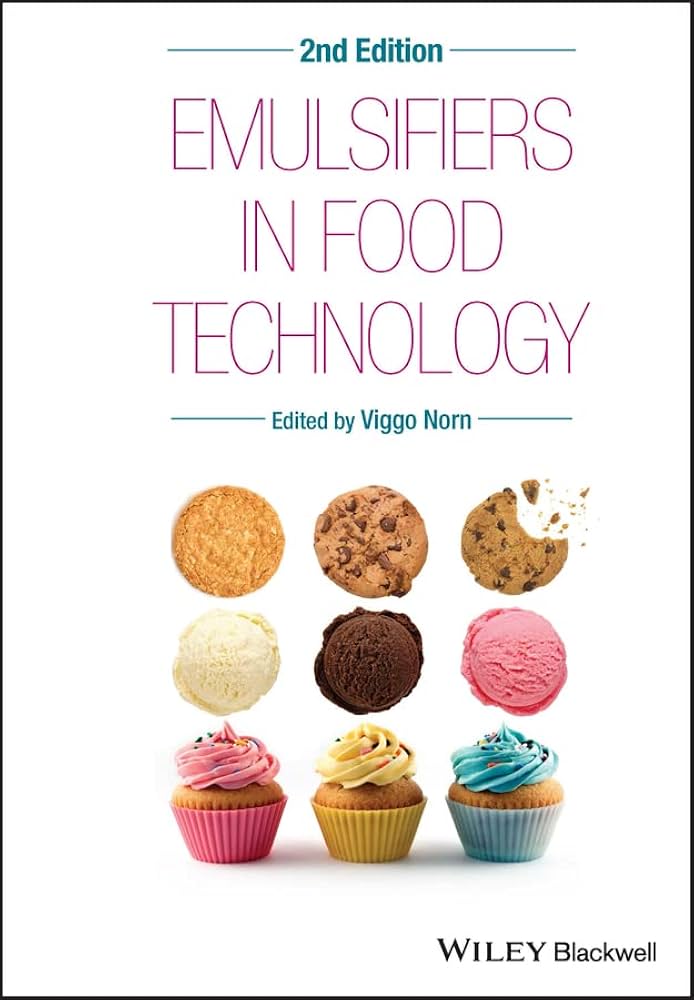The Science of Emulsifier In Food Simplified
Everything about the Role of an Emulsifier in Food and Its Value in Modern Food
Emulsifiers are pivotal in contemporary cuisine, helping with the blend of immiscible liquids like oil and water. Their capability to support mixes enhances the appearance and taste of different foodstuff. From salad dressings to baked products, emulsifiers play a substantial function in both industrial and home food preparation. Yet, the scientific research behind their feature and the future technologies in their use continue to be less checked out. Emulsifier In Food. What much more could be uncovered regarding these essential cooking agents?
Recognizing Emulsification: The Science Behind the Process
Emulsification might seem like a basic cooking technique, it includes intricate clinical principles that are vital for creating stable blends of immiscible liquids, such as oil and water. At the heart of this process exists the idea of surface area tension, which stops the two fluids from mixing naturally. Emulsifiers, substances that minimize surface area tension, play a crucial duty in facilitating the combination of these liquids. They possess both hydrophilic (water-attracting) and hydrophobic (water-repelling) homes, enabling them to anchor themselves at the interface between oil and water.
When an emulsifier is presented and the mixture is upset, it creates a safety barrier around distributed beads of one liquid within the various other, stabilizing the combination. This action not only improves appearance and mouthfeel in food items yet likewise adds to their visual charm. Emulsifier In Food. Recognizing the science behind emulsification is essential in modern cuisine, allowing cooks to produce a selection of sauces, dressings, and emulsified recipes
Usual Kinds of Emulsifiers Made Use Of in Food
Emulsifiers are essential ingredients in the food market, playing an important function in maintaining blends of oil and water. Different kinds of emulsifiers are typically utilized, each with one-of-a-kind residential properties matched for various applications. Lecithin, stemmed from soybeans or egg yolks, is one of the most popular natural emulsifiers, typically discovered in dressings and chocolates. Mono- and diglycerides, which are stemmed from glycerol and fats, are commonly made use of in baked goods and margarine to enhance structure and expand service life. Another common emulsifier is polysorbate 80, favored for its capacity to improve the consistency of gelato and sauces. Furthermore, xanthan periodontal and guar gum tissue work as thickening representatives that likewise add to emulsification in gluten-free items. These emulsifiers are important to developing a steady, tasty item in modern food solutions, making certain a positive sensory experience for customers.
The Function of Emulsifiers in Different Food Products
A range of food items rely upon emulsifiers to attain desired textures and stability. These compounds help with the mixing of immiscible liquids, such as oil and water, which is essential in several refined foods. As an example, in salad dressings, emulsifiers help preserve a consistent mix, preventing splitting up and enhancing life span. In baked items, they add to an uniform crumb structure and dampness retention, enhancing overall top quality.
Emulsifiers also play a significant function in milk items, such as gelato and yogurt, where they support fat globules, making sure a smooth mouthfeel. In addition, in sauces and condiments, they improve thickness and enhance spreadability. This capability is crucial in the manufacturing of chocolates, margarine, and mayo, where a cohesive product is necessary. Overall, the use of emulsifiers in various foodstuff is essential to contemporary food production, enhancing stability and consistency throughout a vast array of items.
How Emulsifiers Enhance Appearance and Flavor

When included right into foodstuff, emulsifiers significantly enhance both texture and taste, producing an even more enjoyable consuming experience. These compounds help with the mixing of components that commonly do not mix well, such as oil and water, leading to a smoother, creamier consistency. This not just enhances mouthfeel but also permits flavors to spread evenly throughout the item, magnifying the total taste.

Emulsifiers in Home Food Preparation: Tips and Techniques
How can home cooks efficiently utilize emulsifiers to enhance their meals? Emulsifiers play a necessary duty in attaining desirable textures and flavors in homemade dishes. Utilizing egg yolks in mayonnaise or hollandaise sauce enables for a steady solution, combining oil and water successfully. Home chefs can additionally experiment with mustard, which acts as an emulsifier in vinaigrettes, guaranteeing a smooth uniformity.
In cooking, including lecithin, discovered in egg yolks or soy, can improve dough security and wetness retention. Furthermore, utilizing commercial emulsifiers like xanthan gum or guar gum tissue can assist thicken sauces and dressings while maintaining a luscious mouthfeel.
When resource developing ice lotions or whipped garnishes, emulsifiers can avoid ice crystal development, causing a smoother structure. By mastering these strategies, home cooks can significantly elevate their cooking developments, providing regular and pleasurable recipes that showcase the power of emulsification.
The Future of Emulsifiers in Culinary Innovation
As the cooking world remains to progress, the role of emulsifiers is positioned to become varied and increasingly ingenious. Advancements in food science are bring about the growth of brand-new emulsifying agents stemmed from natural sources, which provide to health-conscious consumers and boost the sensory top qualities of meals. Advancements such as plant-based emulsifiers are gaining grip, permitting chefs to produce vegan and allergen-free alternatives without jeopardizing appearance or flavor.
Furthermore, making use of emulsifiers in molecular gastronomy is increasing, advice enabling chefs to explore unique textures and presentations that astound restaurants. As sustainability becomes a top priority, the future may see a change in the direction of environment-friendly emulsifiers that lower environmental impact.
Eventually, emulsifiers will certainly continue to play a crucial duty in cooking advancement, connecting the space in between practice and modernity, and permitting chefs to push the boundaries of imagination in their cooking areas.
Frequently Asked Questions

Are Emulsifiers Safe for People With Allergies?
Emulsifiers can be secure for individuals with allergies, depending on their specific level of sensitivities. Nevertheless, specific emulsifiers, originated from allergenic resources like soy or eggs, might trigger reactions, demanding cautious component analysis and consultation with health care specialists.
Just How Do Emulsifiers Impact Food Shelf Life?
Emulsifiers improve food service life by stabilizing combinations, stopping separation, and reducing microbial growth. This stability assists preserve appearance and flavor over time, enabling items to stay appealing and risk-free for intake longer than without emulsifiers.
Can Emulsifiers Be Derived From All-natural Sources?
Yes, emulsifiers can be originated from all-natural sources such as plants, eggs, and dairy products (Emulsifier In Food). These natural emulsifiers help maintain mixtures, improving structure and uniformity in different food applications while being favored for health-conscious consumers
What Are the Environmental Influences of Emulsifier Production?
The ecological influences of emulsifier production include resource depletion, habitat devastation, and air pollution from synthetic procedures. All-natural emulsifier sourcing can reduce some results, yet in general, commercial practices still position considerable environmental obstacles to environments worldwide.
:max_bytes(150000):strip_icc()/salad-dressings-2500-57ad12295f9b58b5c2484d0a.jpg)
Exist Vegan Emulsifiers Available in the Market?
Yes, there are several vegan emulsifiers available on the market, such as lecithin stemmed from soy or sunflower, guar periodontal, and xanthan gum. These alternatives accommodate plant-based diets without jeopardizing emulsifying residential properties.
Emulsifiers are important ingredients in the food market, playing a vital function in stabilizing combinations of oil and water. A variety of food items depend on emulsifiers to achieve wanted textures and stability. When included into food items, emulsifiers substantially enhance both appearance and taste, creating an even more pleasurable consuming experience. Additionally, these details emulsifiers can support air pockets in whipped items like lotions and mousses, leading to a light and airy texture. Emulsifiers boost food shelf life by supporting mixes, preventing splitting up, and reducing microbial growth.